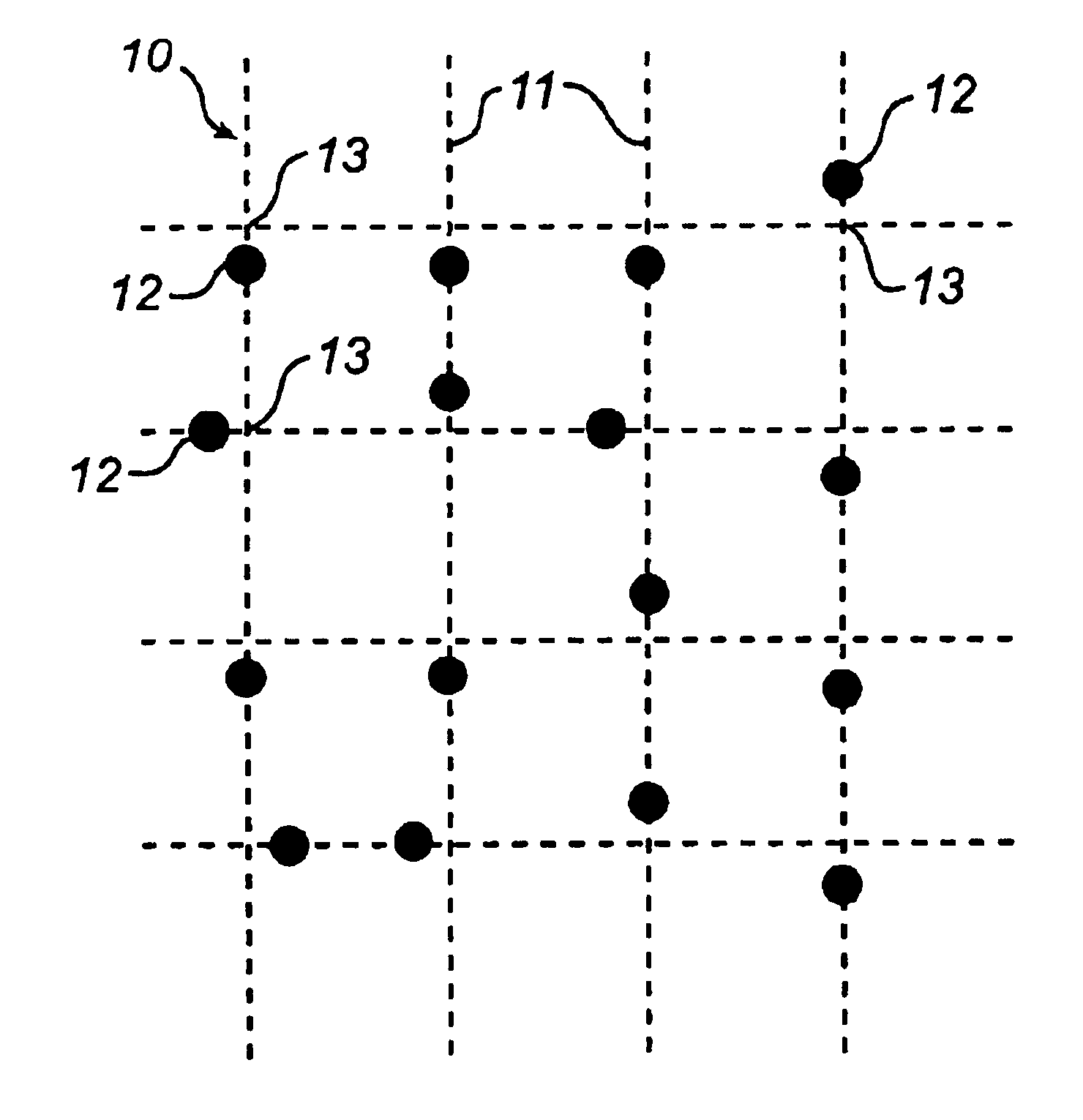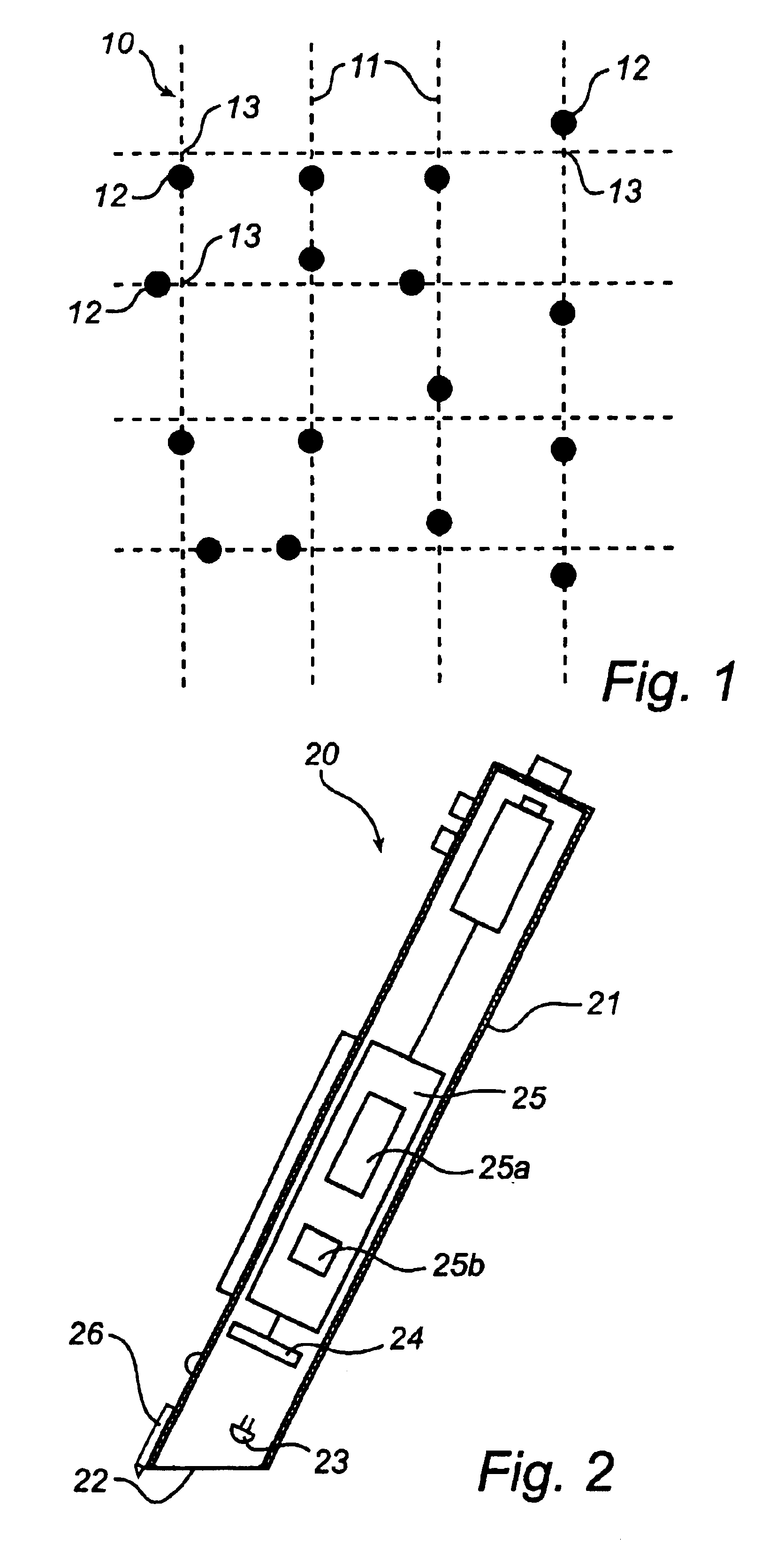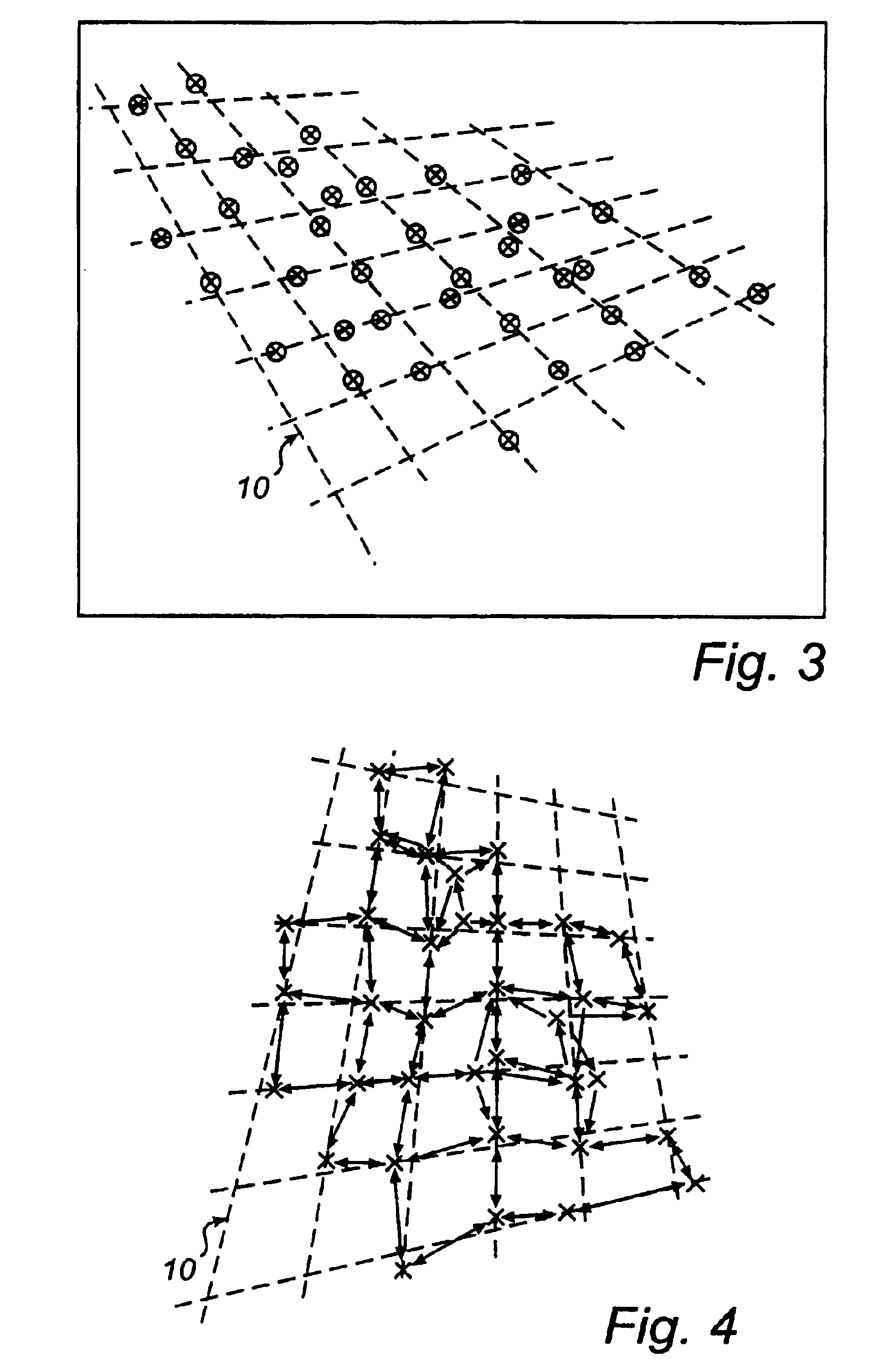Reconstruction of virtual raster
a virtual raster and reconstruction technology, applied in the field of coding pattern identification, can solve the problems of uneven signal level and/or sharpness, noise, geometric distortion, etc., and achieve the effect of efficient computation
- Summary
- Abstract
- Description
- Claims
- Application Information
AI Technical Summary
Benefits of technology
Problems solved by technology
Method used
Image
Examples
first embodiment
[0077]According to this reconstruction process, the data processor 25 carries out a regression adaptation of groups of points to straight lines which approximate raster lines, as is indicated in FIG. 10. More specifically, the points are grouped according to their raster positions. Thus, based on FIG. 8, vertical groups have been formed with points whose raster positions in a first dimension are given by −1, 0, 1, 2 and 3, and horizontal groups with points whose raster positions in a second dimension are given by −1, 0, 1, 2, 3 and 4. The direction of each individual line may have low precision on account of the small number of points per line, especially at the periphery of the selected component. Therefore, the data processor 25 carries out a supplementary regression adaptation in which the coefficient of inclination of the vertical and horizontal lines is adapted to a linear function in the horizontal and vertical directions. Perspective effects mean in fact that that mutually pa...
second embodiment
[0081]According to the reconstruction process, the data processor 25 carries out the reconstruction by computing a homogeneous transformation matrix. In this case, each point in the non-corrected binary image (FIG. 3) belonging to the selected component, as shown in FIG. 8, is compared with a corresponding raster intersection in an ideal raster, as shown in FIG. 12. Here, the raster positions are used to identify points and corresponding raster intersections, as is also indicated in FIGS. 8 and 12. A system of equations can thus be set up containing twelve unknown parameters (of the transformation matrix) and equations which in number are twice as many as the points in the selected component, in a manner similar to that described in “Digital Image Processing” by R. F. Gonzalez and R. E. Woods, Addison-Wesley, 1992, pp 67-68. Knowing that all points originate from one and the same geometric plane (i.e. the base), the number of unknown parameters can be reduced to eight.
[0082]There ar...
PUM
 Login to View More
Login to View More Abstract
Description
Claims
Application Information
 Login to View More
Login to View More - R&D
- Intellectual Property
- Life Sciences
- Materials
- Tech Scout
- Unparalleled Data Quality
- Higher Quality Content
- 60% Fewer Hallucinations
Browse by: Latest US Patents, China's latest patents, Technical Efficacy Thesaurus, Application Domain, Technology Topic, Popular Technical Reports.
© 2025 PatSnap. All rights reserved.Legal|Privacy policy|Modern Slavery Act Transparency Statement|Sitemap|About US| Contact US: help@patsnap.com



